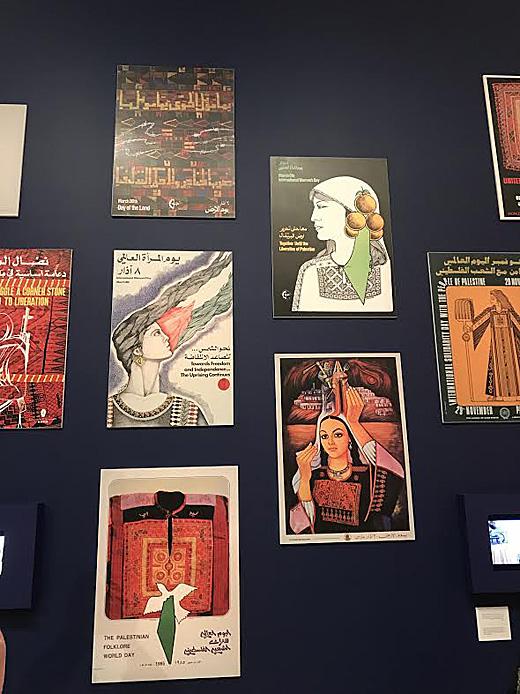From the catalog:
Embroidery on posters: the circulation of symbols
The 1970s saw the development of Palestinian embroidery as a cornerstone of the revival of heritage and articulation of nationalism, as Israeli appropriation of Palestinian culture became more flagrant. In paintings and illustrations from this period, the female peasant in an embroidered dress is made synonymous with Palestinian endurance—by virtue of the connection of the peasant to the land, and of women to the reproduction of the nation. Images of idealised rural Palestine, and women as the ideal mother, wife or fighter, began to circulate as poster. This shifted embroidery into a symbolic register that has informed its use until today.
Images and illustrations of women on posters were increasingly militarised in the 1970s and 1980s, as the Palestinian resistance movement intensified. This reached a zenith during the First Intifada of 1987, as Intifada Dresses began to be made by the women of Qalandiya camp and the villages around Hebron. This period thus saw two different but connected articulations of female agency advanced in image: on the one hand as land, as mother, as history; and on the other, as active fighter in the Palestinian resistance. Both of these are shaped, in part, by embroidery.

